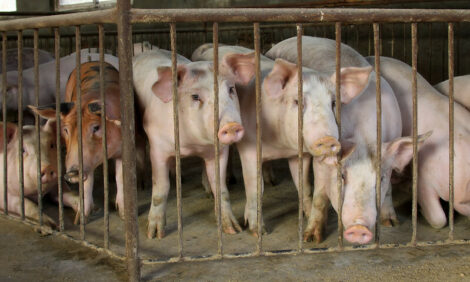



Hog prices will get Canadian Boost
WEST LAFAYETTE, Ind. - It's been a while coming, but hog producers have just seen their operating margins break back into positive territory.
|
Operating losses have been the rule since March 2002 when hog prices dropped below $40 per live hundredweight.
They have generally averaged below the $40 mark until last month. Mounting losses last summer and the higher feed prices resulting from last summer's drought have caused producers to cut back on the size of the breeding herd. The cut back was modest last summer, but has continued to gain steam such that the current herd size is down about three percent.
The reduced breeding herd size has already begun to be reflected in reduced pork production. Pork supplies have been down about three percent over the past two months and supplies will likely continue to stay down. Pork supplies for the summer and fall are expected to be down about 2 percent.
Hog prices will get some upward encouragement from the demand side as well. The cow that tested positive for BSE in Canada should have some upward spin for hog prices. So far, beef demand in the U.S. seems to have been little affected. This means that the much larger impact has been from the reduced beef supply coming from Canada. In 2002, the U.S. imported 1.7 million live cattle and 1.1 billion pounds of processed beef. In total, this amounted to about eight percent of all beef consumed. The reduction of this amount of beef supply seems to be the dominating impact, as live cattle prices have topped $80 per live hundredweight in June for the first time ever. Pork demand will be enhanced as consumers respond to the record high retail beef prices with some substitution of pork.
The trade picture should also begin to turn more friendly for pork producers. Japan and South Korea have also shut off imports of beef from Canada. While this will be most positive for beef exports with known U.S. origin, it will also increase pork exports to these two major buyers. Of course, U.S. pork exports to Canada may be reduced, but this impact could be much smaller as exports so far this year to Japan and South Korea are nearly six times larger than pork exports to Canada.
Exchange rates are another positive development for live hog prices, particularly with Canada who has been supplying about six percent of our live hogs. The U.S. dollar has dropped in value relative to the Canadian dollar by 13 percent this year. The strengthening Canadian dollar provides less incentive to ship hogs to the U.S. for finishing and processing. However, it will take more time for this impact to develop as most of these hogs enter the U.S. on coordinated finishing contracts.
Finally, the U.S. economy shows signs of emerging from its long period of slow growth, at least as forecast by the current rising stock market. Faster growth in consumer incomes would have a small, but positive, impact on hog prices.
So what do these fundamentals mean for hog prices? Clearly, declining hog numbers in the U.S., the potential for reduced Canadian imports, and improving demand should mean better times ahead for hog producers.
Live hog prices are expected to average in the low to mid $40s this summer, and drop back to the very high $30s to low $40s for the fall. If so, the year would show a modest positive margin for many hog producers. Lower feed prices are also expected by the fall if weather is near normal this summer. Profit prospects for 2004 should be favorable, with some continued reduction in pork supplies, smaller beef supplies, lower costs of production, and the improving economy we have all been waiting for.

Source: FarmDoc. - 2nd June 2003











